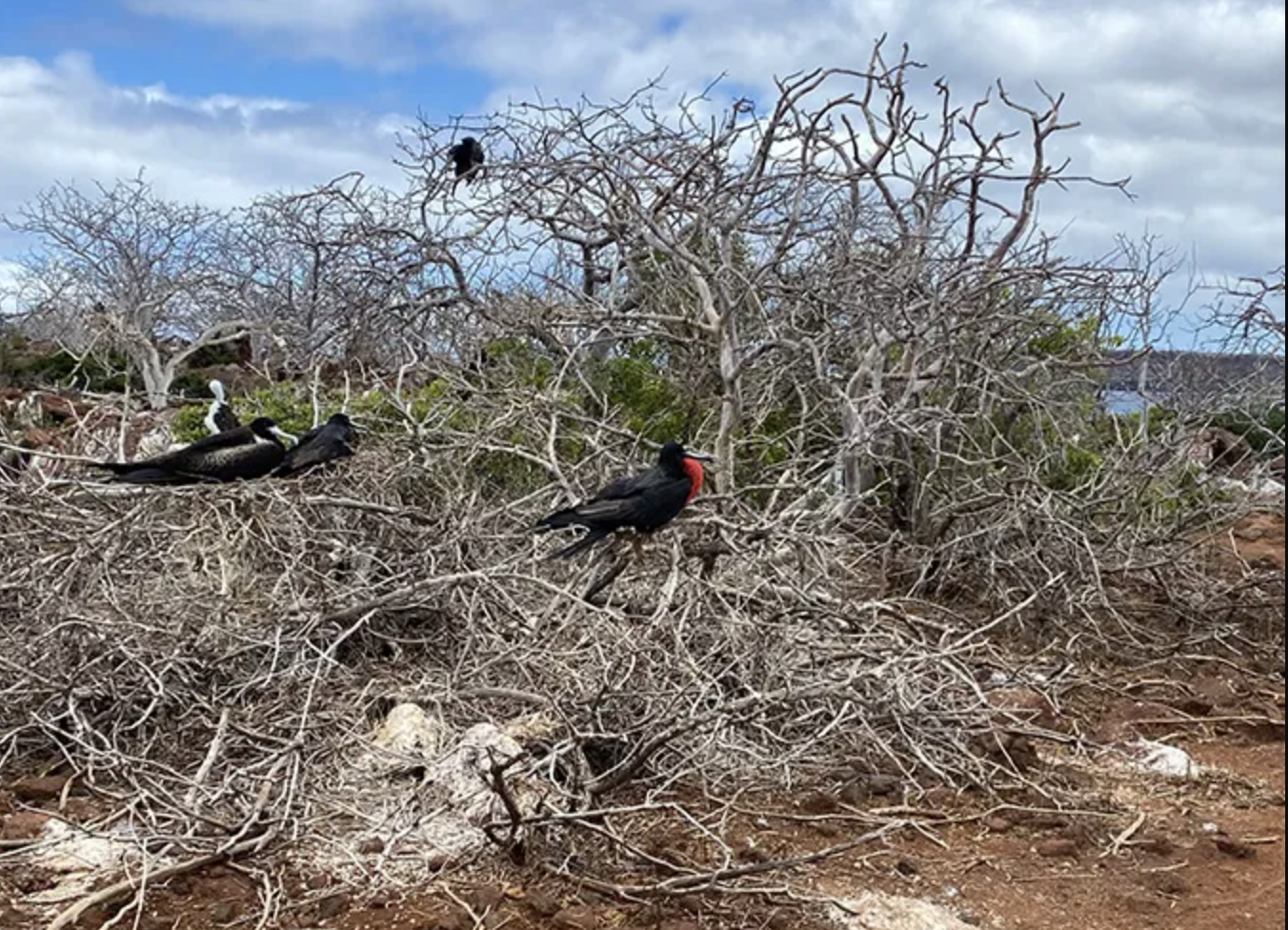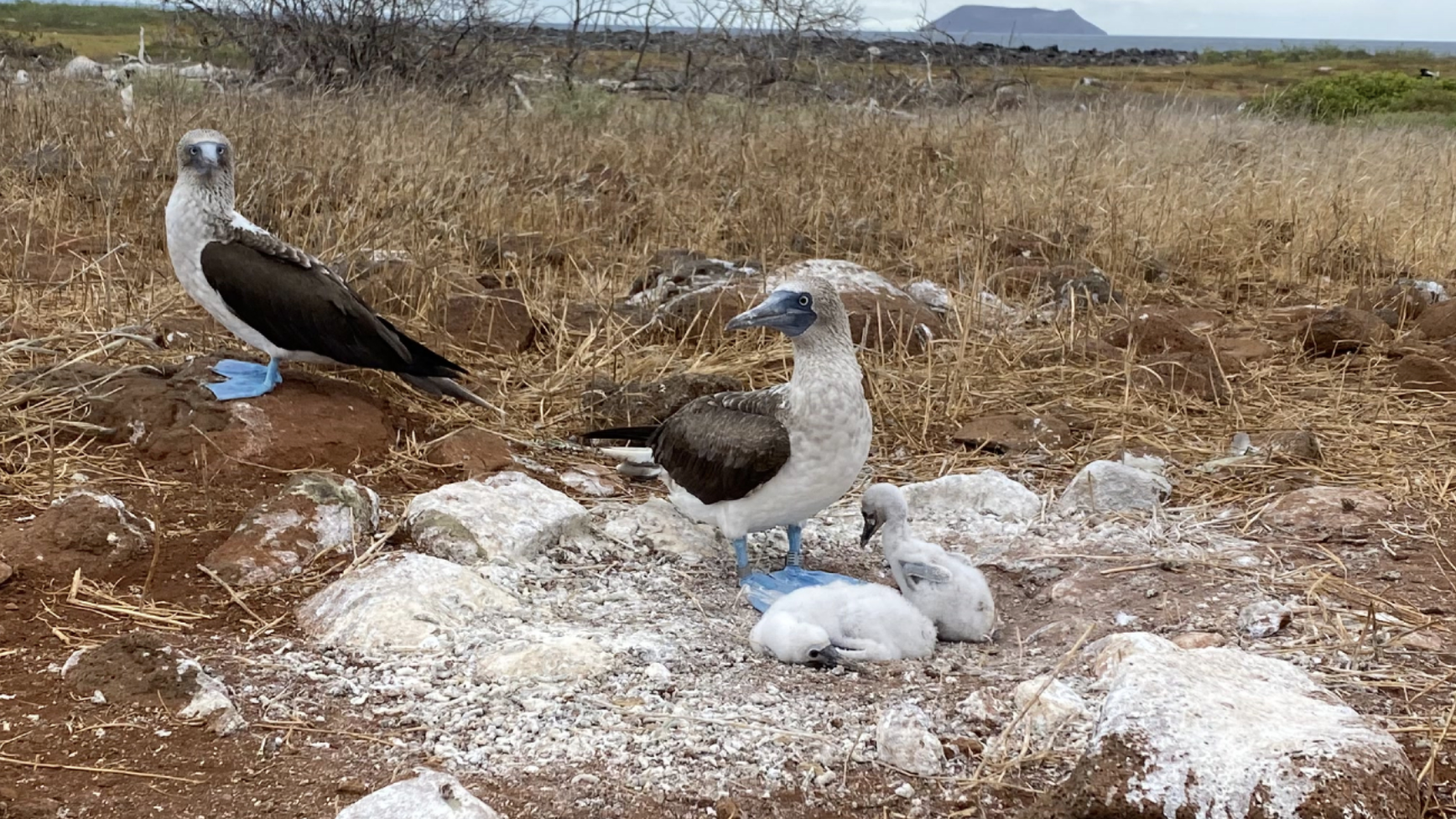As I walk through the rubble-covered rocks toward the plateau of a small island in the Galapagos, part of me is happy. Not only was I about to see the archipelago’s famous blue-footed boobies for the first time, but the sight of guano everywhere and fresh flocks of birds reminded me: the ongoing bird flu epidemic had not yet reached this beautiful place. arrived at the scene. It hasn’t been destroyed yet.
Surrounded by rocks of various shades of red, black and brown, the island is dotted with ghostly, leafless Palo Santo trees and salt bushes. It’s hard to miss the white patches of guano scattered on the rocks in front of this barren landscape on North Seymour Island in November, at the end of the dry season. The sources of feces are also hard to ignore.
The island is known for its large colony of magnificent frigatebirds (Frigata magnificunus), some of which hang in the air above guests’ heads as we disembark from the kayak and walk along the rocky path. As I admire the birds’ bright red throat pouches – which the males inflate like balloons to attract females – I hope no one will deposit feces on my head.

A short walk along a dusty trail leads, in my opinion, to the star of the show, the blue-footed booby (Sula neboxii). These goofy-looking birds show no signs of fear, even as we gather around their nests to take photos.
I was relieved to spot these birds on North Seymour – among their trash – after traveling over 5,000km for a holiday in Galapagos National Park. Just two months ago, at the end of September, news came that a deadly bird flu had reached the archipelago.
The presence of the virus posed a serious threat. These islands are home to birds like the Galapagos penguin, which are found nowhere else in the world. National parks and government officials closed some islands to tourists to protect local seabirds – an understandable move that made me selfishly wonder about seeing the famous birds up close. “To track the virus, we scan the entire island with our eyes,” Gustavo Jimenez-Uzcategui, a wildlife veterinarian at the Charles Darwin Foundation, told Science in September.
The concern is justified. Outside the Galapagos, the global bird flu panzoosis is devastating. (Panzootics are the animal equivalent of a human epidemic.) It’s not clear why the archipelago has so far avoided the worst of bird flu, Jiménez-Uzcategui told me when we met in the island city of Puerto Ayora. The impact of the epidemic on bird populations around the world and the lasting impact they have on the ecosystems of which they are part are also unknown.
“Most people don’t realize we’re in the middle of a wildlife crisis, an animal pandemic, and for some species this could be the nail in the coffin,” says Michelle Will, a virus ecologist at the Peter Doherty Institute. Immunity in Melbourne, Australia, which studies bird flu. “It’s very disturbing.”
Bird flu has taken the lives of millions of animals
Although the viral variant responsible for the outbreak emerged in Europe in 2020, the epidemic did not emerge until late 2021. Since then, bird flu has killed potentially millions of wild birds (SN: 3/6/23). Millions of wild birds have died in Peru. Thousands of deaths have been documented in places such as Russia and Canada. In the United States, bird flu has been confirmed in approximately 9,000 wild birds, some of which have been killed by hunters.
In October, bird flu first reached the Antarctic region when the unexplained death of brown skunks on Bird Island was found to be infected with the virus.
But not only birds are susceptible to flu. “If you can imagine thousands of dead birds, you can imagine what an all-day buffet for whiteflies is,” Wiley says. Avian predators, including bears and foxes around the world, have tested positive. Marine mammals such as seals and sea lions that swim with or eat infected birds are victims of mass die-offs. In October, a polar bear died from the virus in the Arctic. On January 11, scientists confirmed that elephants and seals on the sub-Antarctic island of South Georgia had been infected.
By the time of my visit in mid-November, the feared mass bird die-off in the Galápagos had not yet occurred. To date, only 34 confirmed cases of influenza have been reported in red-footed and blue-footed boobies, Nazca boobies, frigatebirds and tropical birds.
